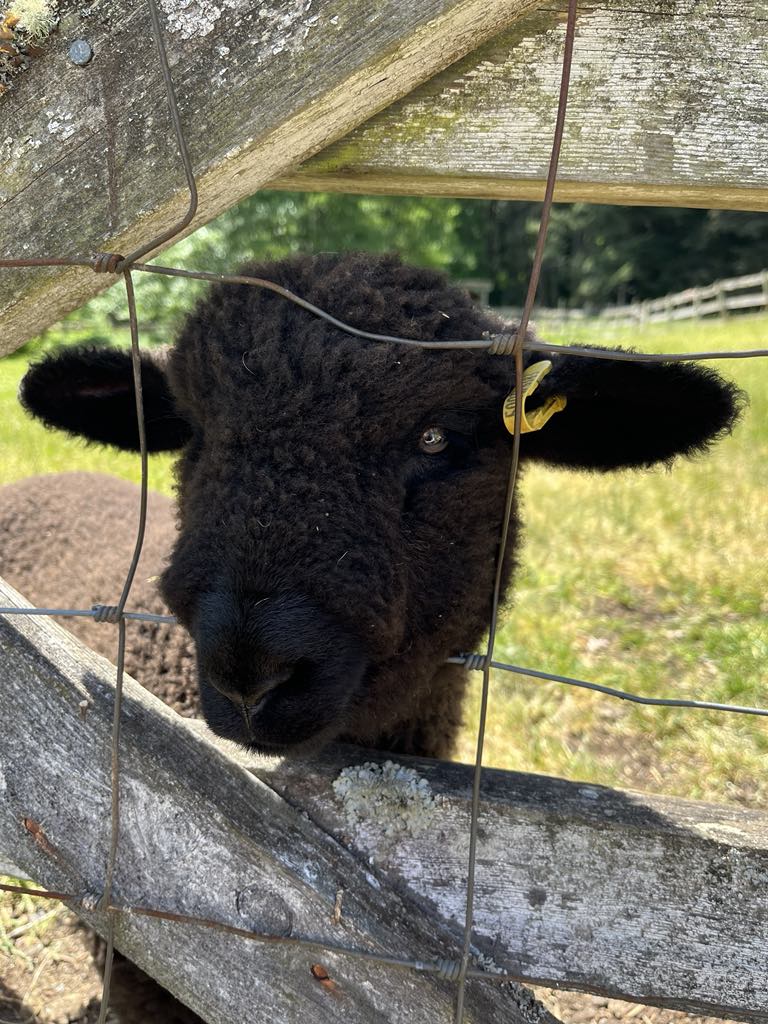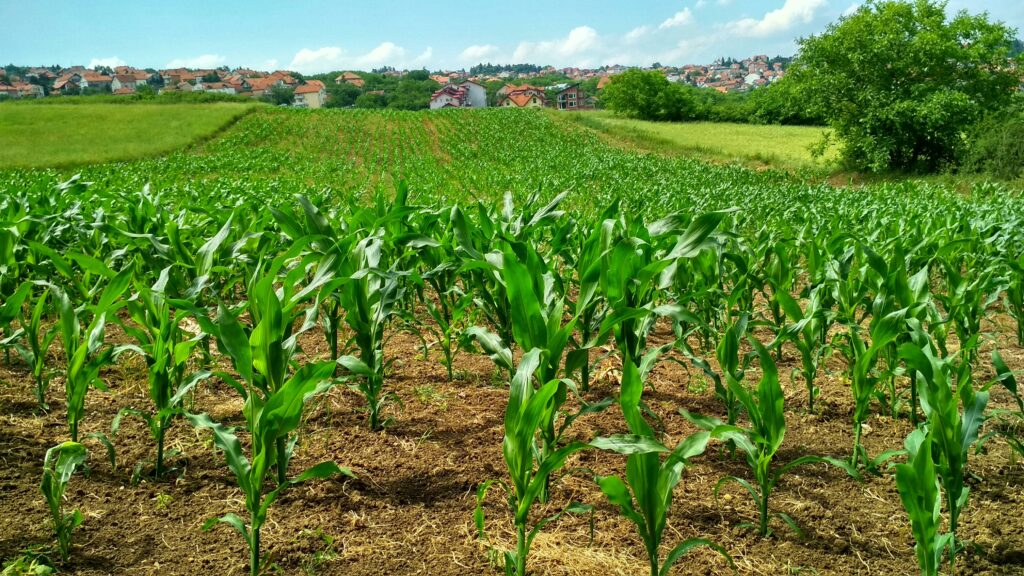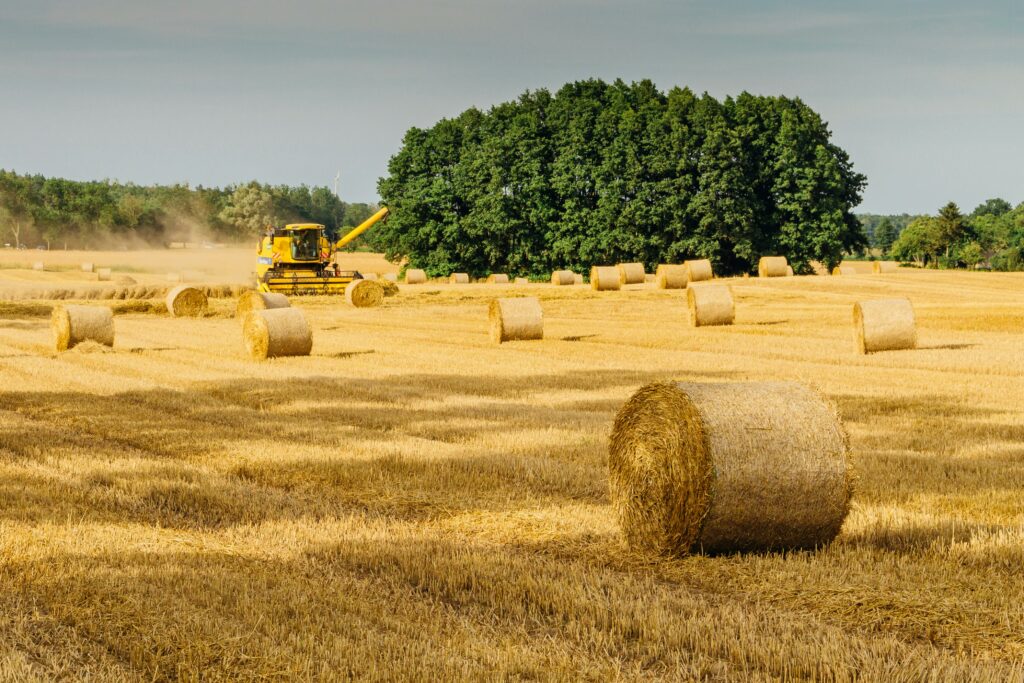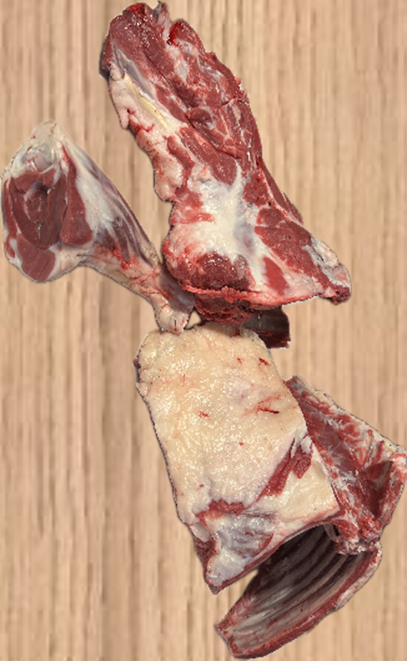
By Theresa Kew
December 12, 2024

Introduction
Food disconnect arises from the separation of the consumer from food production. To most people agriculture is an idea, something that others take part in—a concept, but not a reality. To the casual urban dweller, the idea of agriculture is a vague impression of big tractors and open fields, plaid shirts and overalls, muddy boots, and maybe a few cows dotted about. It doesn’t include the lifestyle, the time and energy and money put into feeding a growing population, but most of all, this urban idea of agriculture doesn’t include the process of turning plants and animals into the food we find on the grocery store shelves. This is the core cause of food disconnect. People are seeing the final product, abstractly connecting it to the impression of tractors and overalls, but not fully understanding what goes into the food they are eating.

Agriculture: The theory or practice of cultivating soil to produce crops.
Photo taken by Karol Wiśniewski, used for free through the Pexels licensing agreement.
In most cases, food disconnect is an unconscious effect caused by popular media; people may take for fact what they see online, and not look deeper into the truth. Advertisements can contain fictionalized content to increase viewer interest; an example of this is the Hershey’s Chocolate Milk ad from 1983 which may have contributed to the assumption that chocolate milk comes exclusively from brown cows. According to a survey summarized by CNN in 2017, 7% of Americans (that’s 17.3 million people) thought that chocolate flavouring came out of a cow. However, the most common cause of disconnect between food and its source is the meat paradox. In this case, rather than being caused by the circulation of misinformation, the meat paradox is a psychological effect that people use to dissociate from the origin of their meat to decrease guilt caused by eating animals.
While it may seem like food disconnect is a fairly harmless issue, it can have an adverse affect on health. Disconnect can lead to a knowledge gap between the name of an ingredient and what it actually means. This can cause a consumer to believe they are buying something healthy, while instead they are buying food with high levels of processed sugars. According to a survey by Agriculture Canada, only half of Canadians read the ingredient lists on food packaging. However, considering the lack of education on food production, it seems safe to assume that less than half fully understand exactly what they are eating.
The Meat Paradox
Meat has been a staple of our diet for over two million years, but a common theme among people these days is the guilt they feel when eating it. Some people find it difficult to eat meat, knowing that their enjoyment of a meal is at the expense of an animal’s life. For some, it is easier to continue enjoying meat after distancing themselves from its animal origins, rather than feeling guilty for the animal’s death. The meat paradox results from this mix of guilt and enjoyment that a person has when eating meat. The solution? A dissociation between meat and its animal origins, allowing the consumer to enjoy meat, without the feelings of guilt that go along with it. A disconnect, if you will.
There are multiple strategies used by consumers to overcome the meat paradox, but the one that most often leads to food disconnect is dissociation. In the article Dissociating meat from its animal origins: A systematic literature review, Benningstad and Kunst explained how the two contrasting ideas of enjoying meat and not wanting to harm animals created a cognitive dissonance, causing feelings of discomfort. A common method to gain consistency between one’s ideals, and thereby remove discomfort, was to distance oneself from the animal origins of meat. The already significant distance between farms and grocery stores aided in this, allowing the consumer to choose meat neatly packaged into cuts that had no resemblance to the animal it was before. Linguistics also helped in this dissociation, with words like mutton, beef, and pork lacking any indication of the animal the meat came from. In some cases, highly processed meat wasn’t even considered to have come from animal origins.



The connection? Declan.
The first two photos were taken by Theresa Kew, the last taken by Jason Kew. All photos used with permission from the owner.
Although commonly being an unconscious reaction to the meat paradox, dissociation can also be actively implemented to prevent cognitive dissonance. While eating meat, people may refrain from connecting their food to animals, and while shopping they will often choose the piece that least resembles its animal origins. Another aspect of this conscious decision for dissociation is the effect it may have on other people, specifically children. If parents are choosing to actively dissociate meat from animals, it is likely that their children will not learn the connection between the two. While parents may be subconsciously protecting their children from the cognitive dissonance they are actively avoiding, this leads to a lack of knowledge on the child’s part in regard to food origins and what constitutes a healthy meal.
The article by Benningstad and Kunst also explored which ideas and imagery most disrupted dissociation. As well as meat products that held animal characteristics, they noted that greater levels of disgust were seen when a dish was paired with the image of the baby animal rather than the adult. Since baby animals are more likely to elicit caring responses, the image was better able to break through the dissociation and create a cognitive dissonance. A third example of imagery which disrupted dissociation was in observing the transport of animals to the slaughterhouse. While one may look at a cow in the field and not acknowledge the connection to a steak, it is much more difficult to watch a cow enter an abattoir and not recognize a walking steak for what it is.

What do you call a cow with no legs?
Ground beef!
Photo taken by Julia Volk, used for free through the Pexels licensing agreement.
Cause of Food Disconnect
The root cause of food disconnect can be attributed to the dwindling number of people working in agriculture or the food industry. In her article on Canada’s Disconnect with the Food We Eat, Kate Jackman-Atkinson explains how, in the 160 years between 1851 and 2011, the number of Canadians living in rural areas decreased from 90% to 18.9%, with only 2% actively living on farms. She explained how, in the past, most Canadians living in urban areas would be able to visit extended family on farms. That is no longer the case. Benningstad and Kunst also explained how food disconnect has come about, indicating how urbanization moved the population from rural to urban living, and that industrialization allowed for a large-scale raising and slaughtering of animals for meat. By removing people from the source of their food and instead offering it up in neatly wrapped packages, we foster an environment where it is easy for consumers to disconnect from food origins.
While the transition from rural to urban life plays an important role in food disconnect, it is also important to acknowledge people’s actions in dissociating themselves from the food they eat. The meat paradox is another main cause of food disconnect. Whether consciously or subconsciously, people refuse to see the connection between their meat and the animal it came from in order to avoid cognitive dissonance. Whether this is a learned or a taught behaviour, it helps to widen the gap between the producer and the consumer. This gap in understanding can lead to unfamiliarity in reference to the contents of certain, more processed foods, bringing about less healthy meals.
Additionally, Benningstad and Kunst explained how societal mechanisms like institutionalization allow people to maintain dissociation. The marketing and selling of meat in ways that deliberately conceal its animal origins can be considered institutionalization since it reduces the requirement for people to use coping mechanisms to prevent cognitive dissonance. The distance is already built between consumers and meat, so people don’t have to actively dissociate. By removing this indication that meat is an animal product, the knowledge gap further increases as generation by generation people lose connection with the origin of their food.
Effect of Food Disconnect
The distance between consumers and producers doesn’t just end at neatly packaged meat. All sorts of ready-to-eat foods have ingredients which have been processed beyond their basic form. An example given in an article from Health Fitness Revolution indicates how a consumer may overlook corn syrup in a box of “healthy” granola bars because they do not understand the processing that goes into making them. Processed foods tend to have added sugars which appear fine on the surface, but upon closer look make the product less healthy than advertisements indicate. That box of granola bars may contain high fructose corn syrup (HFCS), an ingredient which could pass as healthy, based on the claims put forth by the packaging, but is actually a leading cause of obesity in America. An article on Hartford Hospital explains how HFCS is made from corn starch; by chemistry definition, that is many glucose molecules linked in a long chain. These molecules are broken into individual glucose sugars to form corn syrup, then enzymes convert some of the glucose into fructose. The resulting product is a high-calorie sweetener which can cause rapid weight gain, leading to diseases of the heart or liver, as well as diabetes and abnormal levels of cholesterol or fat in the blood.

The addition of processed sugars is not the only change that makes food unhealthy. Processing can also remove nutrients from foods and add unhealthy compounds, thereby decreasing health benefits to make food taste better. Take chicken nuggets: one might expect them to be formed from the breast meat of the chicken, but this isn’t always the case, according to an article on WebMD. Extra bits such as tendons, nervous tissue, fat, and sometimes bones can be added to the mix and all ground up together. Additionally, preservatives and other chemicals are added to the meat or breading to increase shelf life or taste. This process removes the nutritional components of chicken, replacing it with fats and chemicals that alter the composition of the nugget to less than 50% meat. On the surface, chicken nuggets may seem like a fast and nutritious meal, although not particularly healthy. A deeper look into the ingredients and processes that go into making chicken nuggets reveals that they are neither particularly healthy, nor entirely nutritious. The high levels of fat in their content, paired with preservatives, chemical flavouring, and deep frying, substantially decrease the nutritional benefit of unprocessed poultry.
Summary and Solutions
On the surface it may seem that food disconnect is a simple, or even convenient occurrence, creating a separation between consumers and producers. By distancing meat from its animal origins, consumers can indulge in meat-based products without feeling guilty at the loss of animal life. But food disconnect isn’t quite so simple as that. The results have a greater impact on health and understanding than people think.
Chelsea Sutherland explains in her article on Addressing the Knowledge-Gap how a lack of understanding has led consumers to become more interested in food production. However, the catch is that the most readily available sources of information are on social media, and they are often lacking in credibility. Information that circulates social media most readily is often presented by people wishing to point out the more negative aspects of agriculture, such as the downsides of GMOs and pesticides, rather than their benefits. This misrepresentation of information creates a distrust between consumers and producers, and impacts the agriculture industry. Sutherland explores ideas for educating the public about food origins in order to decrease the knowledge-gap and increase transparency, explaining how the information must be shared in digestible portions that don’t cause an information overload, as that will decrease willingness to learn. Sutherland concludes that social media will be one of the best ways to spread positive messages about agriculture, along with introducing agriculture education into schools. By educating younger generations, information regarding agriculture will be spread more rapidly through social networks, allowing it to reach broader audiences.
As Jackman-Atkinson put it, Canadian children learn about geography, the solar system, chemistry, physics, and biology in school, but they are lacking in education related to agriculture. While farms and agriculture groups have been trying to fix this disconnect without success, the school system is perfectly set up to educate children on what their food is and where it comes from. If only it will spend more than half a day on it.


Leave a Reply
You must be logged in to post a comment.